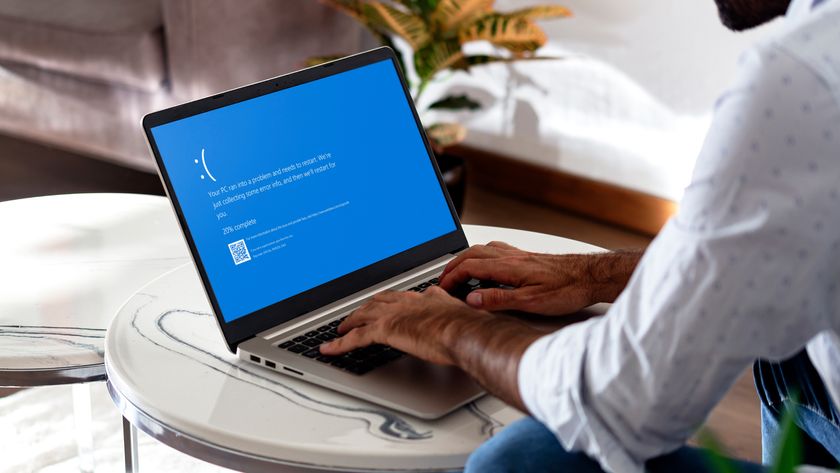Lessons from lockdown: How to balance remote and in-office working
It’s time to reflect on the good, the bad and the ugly of working from home

This time last year the UK was thrust into a national lockdown. Life as we knew it dramatically halted and the country’s once-bustling streets were emptied.
We soldiered through and have spent the last year dipping in and out of new rules, restrictions, and lockdowns. The rule of six, 10pm curfew and substantial meal rule are policies only Brits who’ve lived through the pandemic will understand.
One year on and with many businesses planning their return to the office, it’s time to reflect on the good, the bad and the ugly of working from home and use the lessons businesses have learnt to guide future decisions.
- Here's our list of the best VoIP services right now
- Check out our list of the best video conferencing services around
- We've built a list of the best VoIP phones available
Marcus Thornley is CEO at Totem
Positive change due to remote working
Before the pandemic, being able to work from home was considered a ‘perk’ that many businesses would shout about. Employees have found joys that come with working from home, such as having time for a lunchtime workout, while businesses have also seen benefits from this change.
Firstly, remote working enables a business to hire a more diverse workforce. Working from home policies have meant more people with disabilities can and are applying for jobs they might not have considered due to accessibility limitations. As such, remote working policies are likely to widen the talent pool for businesses and increase workplace diversity.
As well as increasing workplace diversity, a recent report found employees are more productive when working remotely, while another found people have a better work life balance as a result of home working. Since the daily commute has become a thing of the past, people can fit personal activities into the day. It’s no secret that a happier team will play a part in a business’s success.
The acceptance of flexible working policies has also been a step in the right direction, with the term ‘hybrid working’ becoming more roundly used. Major banks, such as HSBC and Deutsche Bank have announced they plan to reduce their office space as they expect their team to only spend two or three days per week in the office. More companies are edging towards a flexible way of working – would this have happened if the pandemic had not forced us to work from home?
Are you a pro? Subscribe to our newsletter
Sign up to the TechRadar Pro newsletter to get all the top news, opinion, features and guidance your business needs to succeed!
There’s been a lot of good to come from working remotely such as increased flexibility, productivity, and diversity. However, there have been some negative effects of working from home too.
Be careful what you wish for
Many businesses deem remote working to be ‘unsustainable’. Goldman Sachs boss, David Solomon, publicly rejected it as the ‘new normal’ if a business wants to foster an innovative and collaborative culture. Remote working has also had stifling consequences on people’s mental health, with many reporting feelings of loneliness and an increased workload whilst working from home.
A recent report published in The Telegraph found that people are working, on average, an extra two hours per day since the start of the pandemic. Having your desk and work set up sitting 30 seconds from anywhere in your house means it’s easier to remain in work mode, leading to increasing fears of employee burnout and an inability for people to switch off.
Working remotely has also highlighted issues around collaboration amongst teams. Our research found collaboration is most effective when teams are in co-located spaces, aka an office. As such, working from home can have stifling consequences on a team’s collaboration and creativity. Businesses need to think innovatively to overcome these challenges as some form of remote working looks likely to stay.
Listen and find a balance
While it’s clear the office serves a valuable purpose, HR and business leaders need to use this period to re-author and reimagine what the purpose of the office should be. A one-size-fits-all approach is not going to work for most businesses, and companies shouldn’t expect a full return to the office or conversely a permanent working from home model to keep employees happy.
As such, it’s essential that companies take steps to understand what sort of hybrid work model will work best for their people. Without this understanding, businesses could potentially put their people’s morale at risk. Using technology tools to survey and communicate with your people can help deliver understanding and knowledge on how people want to work, which is critical for business leaders to learn through and ultimately use those insights to create their return to the office strategy.
As the UK’s streets start to come alive again, HR leaders and decision-makers have been given a rare opportunity to reflect on what the past year has taught them about their business. A lot of good has emerged, such as more workplace diversity, however, challenges have also come to the surface. As such, the workforce insights that technology can deliver will be invaluable in helping business leaders listen to their employees and guide future return to the office decisions.
- Here's our list of the best project management software
Marcus Thornley is CEO at Totem













